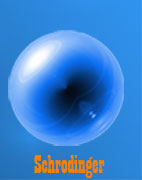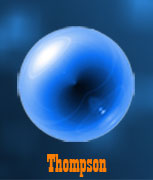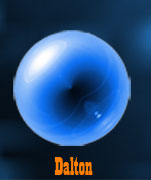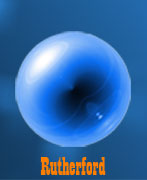The Basics
- Ernest Rutherford was a New Zealander chemist and physicist.
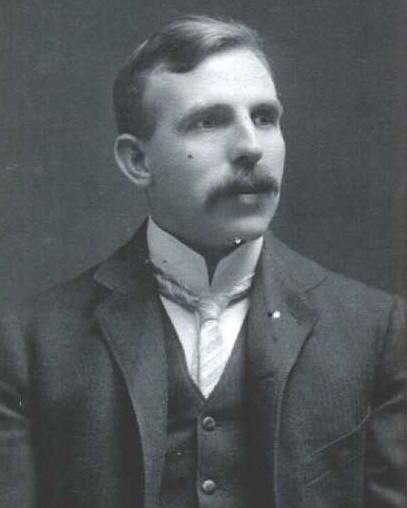
- He studied radioactivity and discovered the concept of radioactive half life.
- Rutherford continued the research of his mentor, J. J. Thompson.
- In his research of the atom, he discovered the existence and properties of alpha, beta, and gamma particles.
- Rutherford also conducted the famous gold foil experiment.
- This experiment allowed rutherford to discover the nucleus and modernize the atomic model.
Nuclear Reactions
- A nuclear reaction is a reaction that effects the nucleus.
- Transmutations are changes in the nucleus that change one chemical element or isotope to another. This equation is an example of a nuclear reaction because the reaction changes the nucleus.
 +
+ =
=
- As you can see, the mass number, 9, changes to 13 and the atomic number,4 changes to 6 after adding the Helium particle, He. This means that the nucleus was changed and therefore it is a nuclear reaction.
A reaction in terms of the particles will look like this:
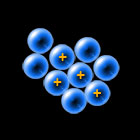 +
+ 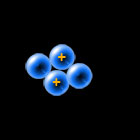 =
=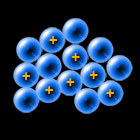



- Nuclear stability is how stable the nucleus is some nuclei are more stable than others.
- The "strong nuclear force" holds the nucleus together.
- The ideal ratio between protons and neutrons is 1:1.
- The ideal ratio between protons and neutrons is 1:1.
Gold Foil Experiment and the next Atomic Model
- Thompson's work on the atom postulated that electrons are stuck in the atom in random places. Rutherford attempted to expand on Thompson's work.
- Rutherford conducted the Gold Foil Experiment.
- This experiment was intended to verify the structure of the atom (which was the Plum Pudding Model at the time).
- Rutherford used an extremely thin piece of gold foil and fired alpha particles,
 , at the foil.
, at the foil.
The experiment looked like this:
- Rutherford shot the alpha particles at the foil, which was so thin that they would pass through and create light on the screen that was surrounding the foil.
- Based on Thompson's model of the atom, Rutherford expected the experiment to look like this:
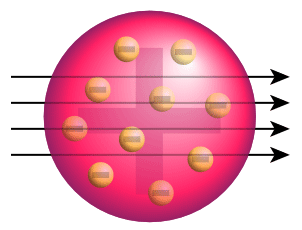
- This would result in light shining on only one spot on the other side of the foil.
- But instead Rutherford saw many spots of light all around the foil.
- What actually happened was different from what was expected. This is what happened in the atom:
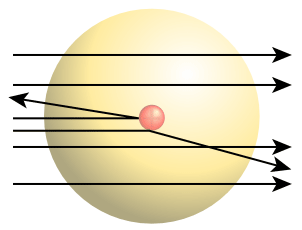
- The alpha particles actually bounced off a positively charged area in the center!
- How did this happen? Rutherford determined that atoms must have something in the center that is getting in the way of the alpha particles.
- This thing was called the nucleus.
- The nucleus is filled with positively charged particles, protons, and neutral particles, neutrons.
- Rutherford showed that the nucleus was in the center and the electrons surrounded it.
- Rutherford knew that the nucleus was positive because the alpha particles are positive and bounced off.
- Thus the new model for an atom was born:
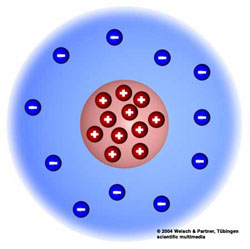
Alpha, Beta, and Gamma Particles
- Alpha, Gamma, and Beta particles are different kinds of particles that play a role in radioactive decay.
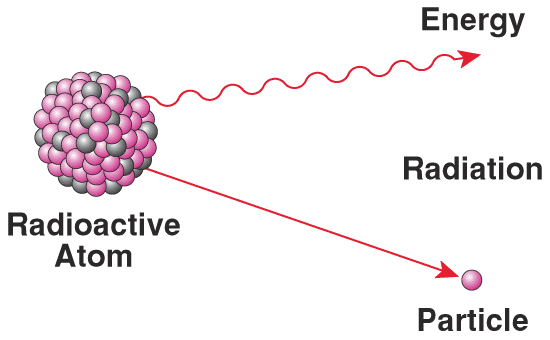
- There are three kinds of radioactive decay: Alpha decay, Beta decay, and Gamma decay.
- Radioactive decay is when an unstable nucleus emits or loses energy by releasing different particles.
- This can happen when the nucleus transforms into a different nucleus, like in a nuclear reaction.
Alpha Decay: 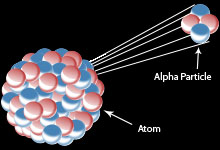
- Nuclear Symbol:

- Symbol:

- Alpha decay is when an alpha particle is released from the nucleus.
- This is basically a helium nucleus, 2 electrons, 2 protons.
- Alpha particles cannot pass through animals or people and don't do damage to people if they come in contact.
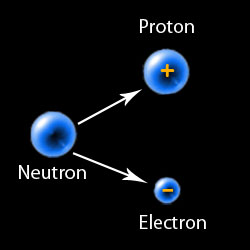
Beta Decay:
- Nuclear Symbol:

- Symbol: β
- Beta decay is when a neutron splits into a proton, which is positive, and an electron, which is negative.
- Beta particles can't pass through humans and therefore cannot do any harm.
Gamma Decay:
- Gamma decay is when a nucleus changes from ma higher energy level to a lower energy level.
- This can happen when it emits photons.
- Gamma particles can pass through humans. This is very dangerous because it can mutate and change particles in your body and cause cancer.

